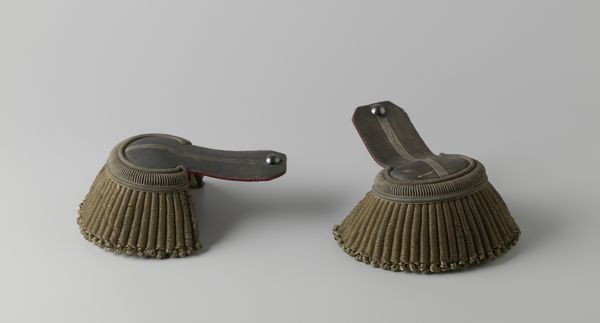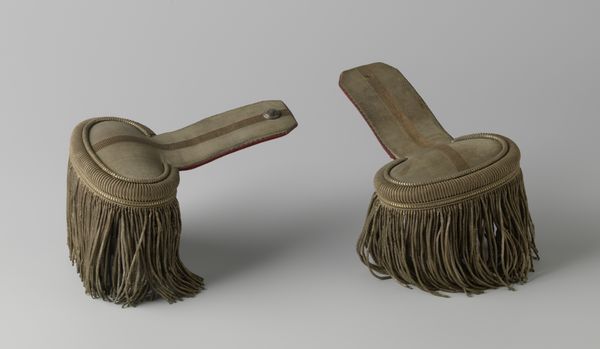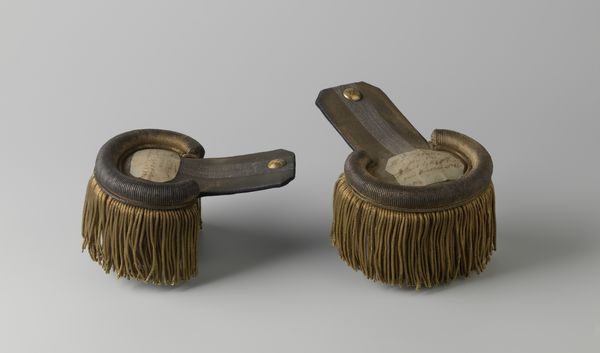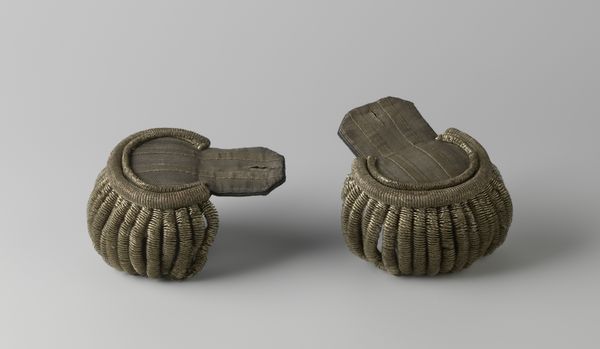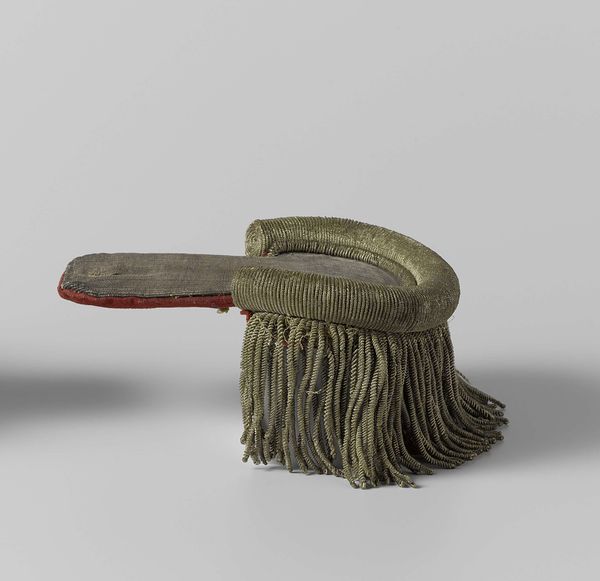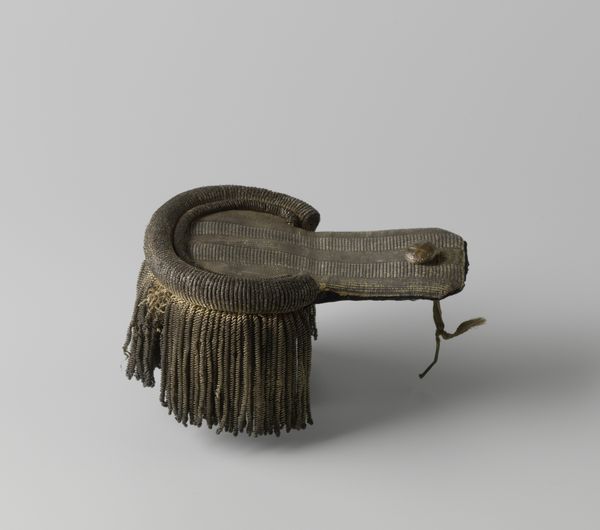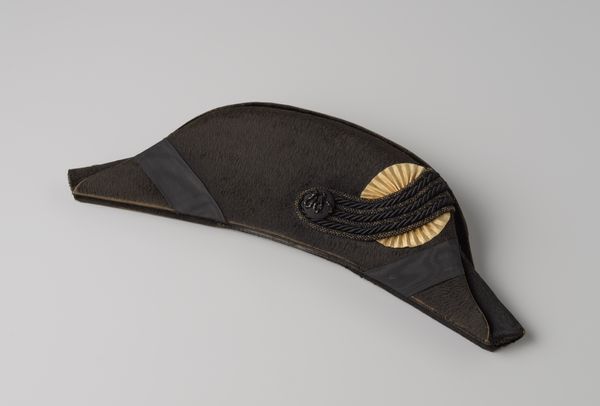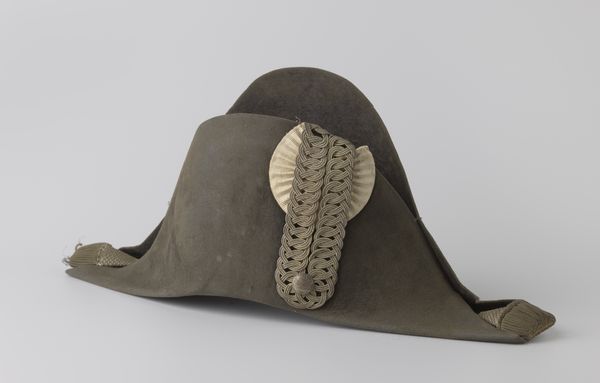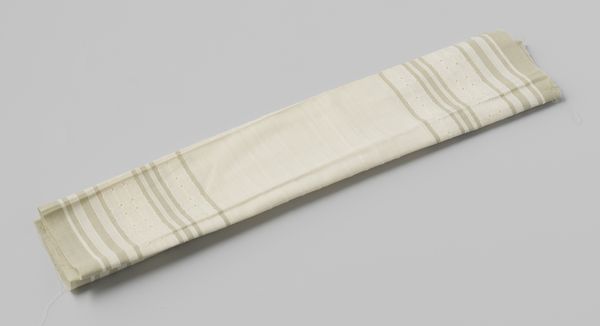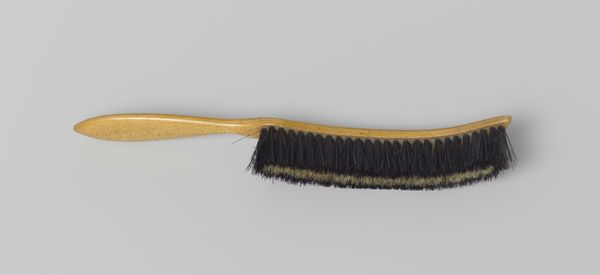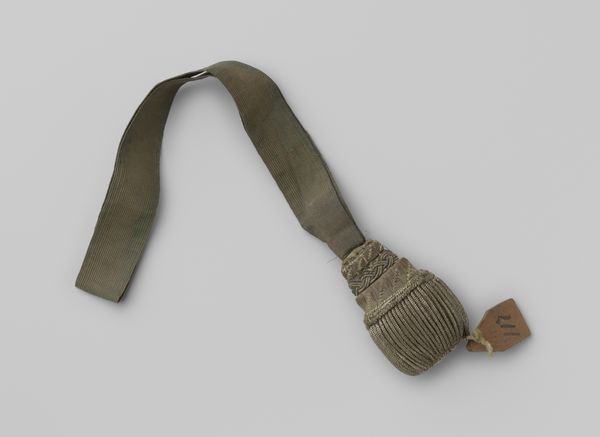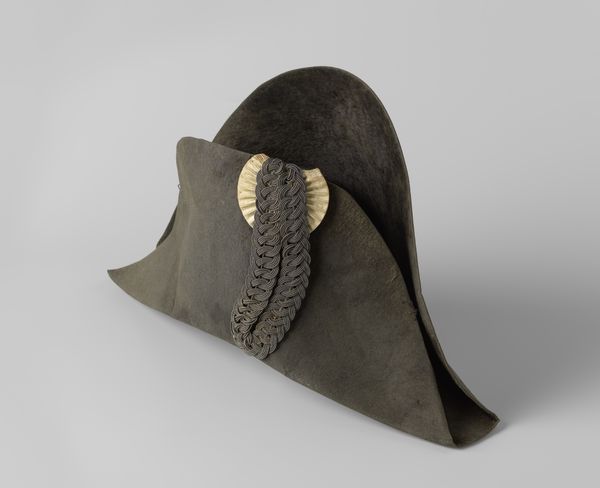
Epaulet van Otto Willem Falck, in 1830/32 Maj. Commandant Bat. Mobiele Amsterd. schutterij, te velde getrokken 29 oktober 1830. 1800 - 1830
0:00
0:00
photography
#
portrait
#
photography
#
romanticism
#
academic-art
Dimensions: width 60 cm, height 12.5 cm, depth 43.5 cm, length 18 cm, width 11 cm, height 8 cm
Copyright: Rijks Museum: Open Domain
Editor: So, here we have a photograph of a pair of epaulettes that belonged to Otto Willem Falck, sometime between 1800 and 1830. They look incredibly formal, almost theatrical. The detail is really striking. What stands out to you most when you look at them? Curator: It's fascinating how an object so clearly tied to military rank and power, something intensely political, can now seem like a relic from a costume drama. The epaulettes are presented here divorced from their context, almost like still-life objects. Editor: Right. Does the way they're presented in a photograph affect our perception of their original function? Curator: Absolutely. Photography here removes them from the active sphere of military display. They are defanged, so to speak. Instead of conveying authority, the image invites contemplation of vanished social structures. Consider how this image would function in, say, a museum display versus a propaganda poster during Falck's time. Very different! Editor: I see what you mean! How the museum environment impacts our reading of objects as historical symbols, rather than just aesthetic objects. Curator: Precisely. We're less likely to view Falck himself, more the societal conventions he embodies and upheld. And that's a really fascinating shift! Editor: This definitely makes me think differently about how seemingly simple photographs of objects can hold so much social and political weight! Curator: Indeed. It forces us to examine the evolving roles these artifacts play, not just their initial intended purpose.
Comments
No comments
Be the first to comment and join the conversation on the ultimate creative platform.
